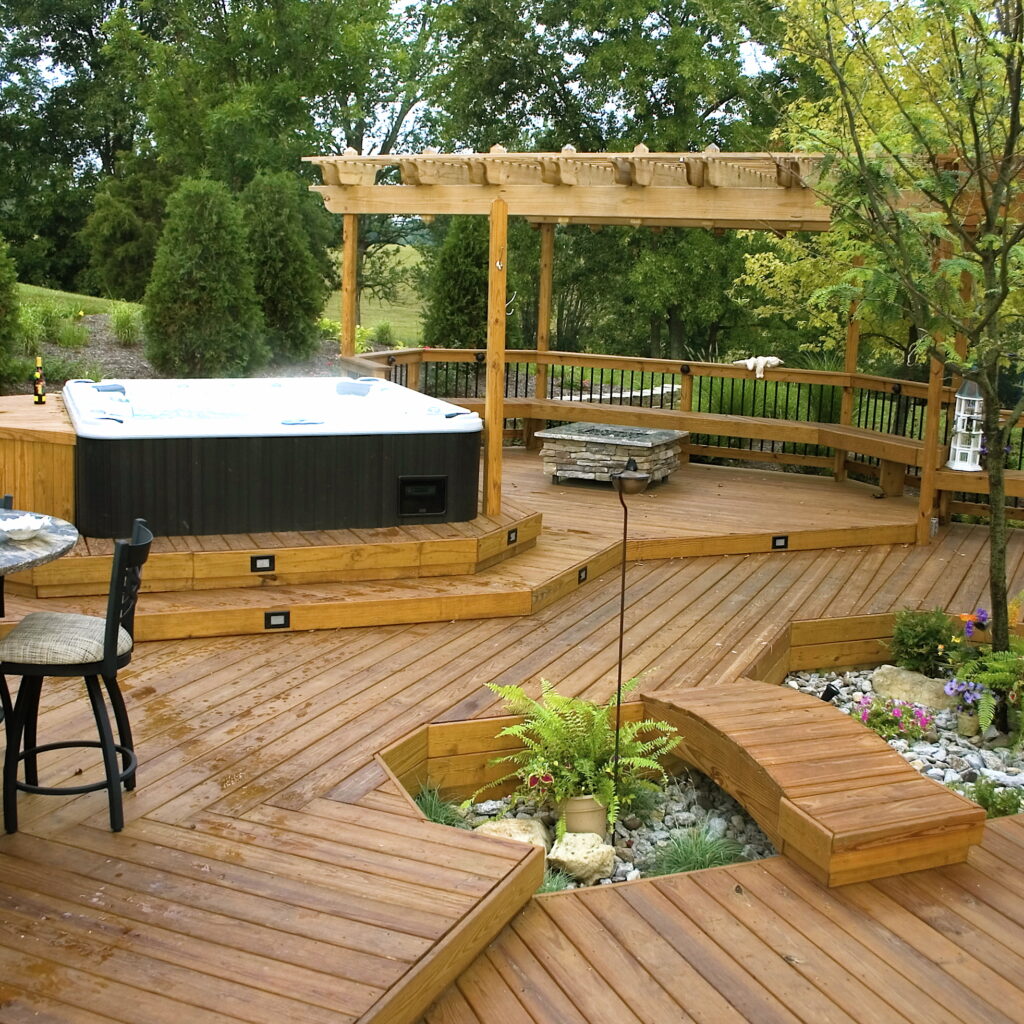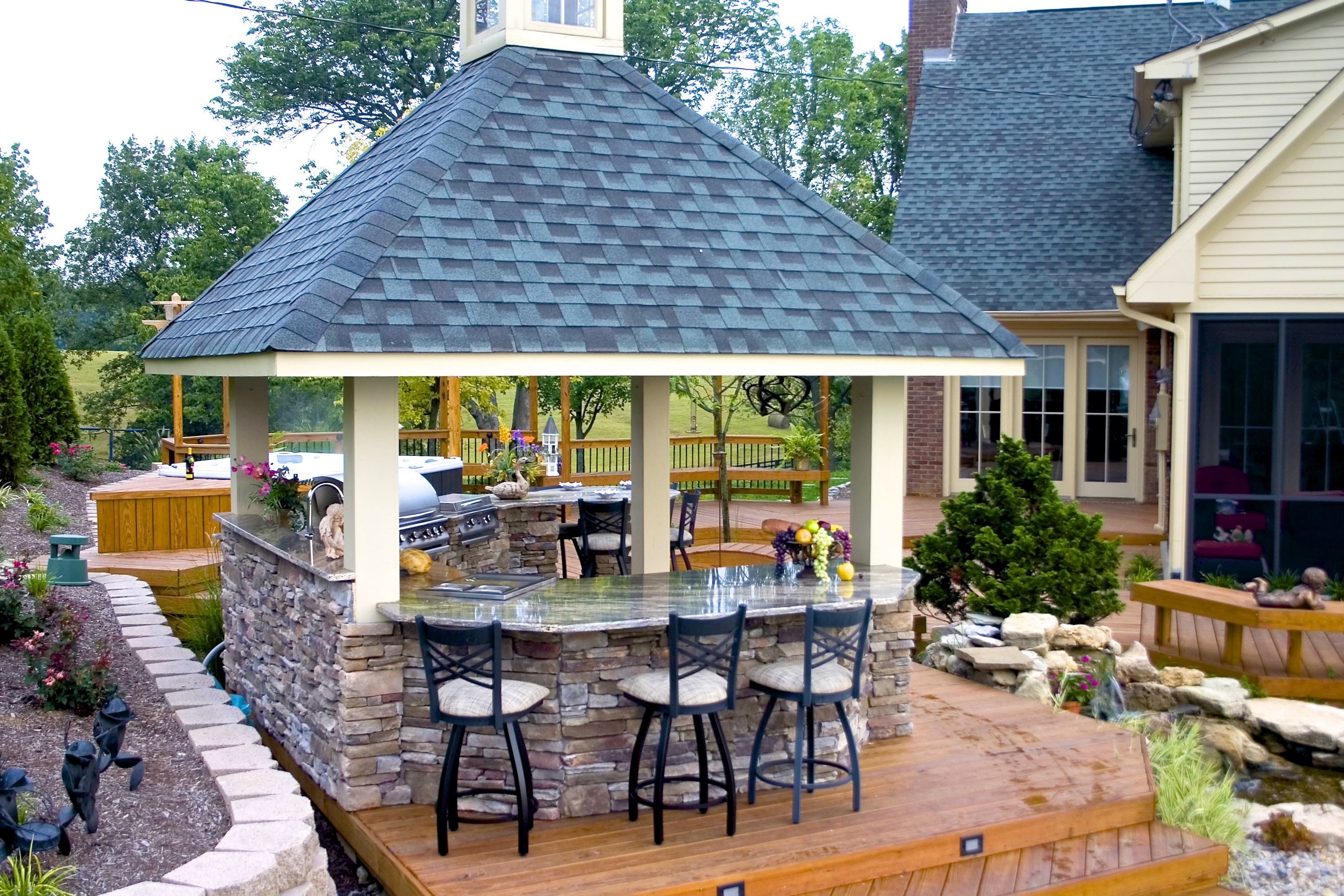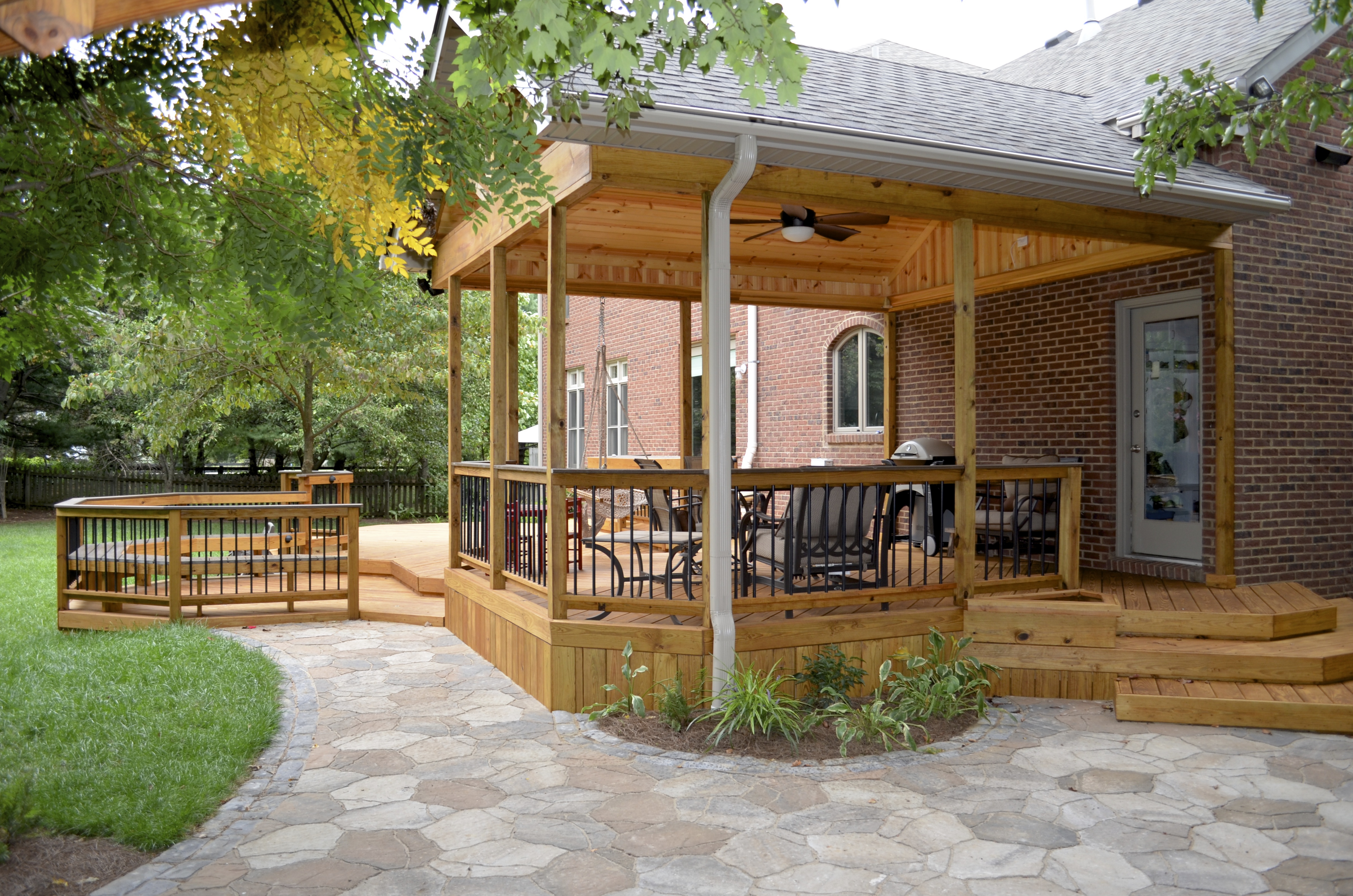
We’ve come a long way in terms of deck-building, and yet there are still many misconceptions when it comes to the process, purpose, and timing for staining and maintaining the wood for a deck. Below, we debunk some common beliefs and practices that could actually cause more harm than good to the wood of your newly-completed custom deck!

This helpful list serves as a quick go-to guide for those who are new to deck maintenance and care, or for those who simply need a refresher.
1. Staining a deck preserves the lumber. Not true. Pressure treated lumber is already preserved, in most cases for life. The stain merely gives the lumber protection from UV rays that would ultimately turn the wood gray and oxidize it. Many stains also include chemicals that prevent and or resist mold and mildew from forming on the wood in shady, damp locations. That resistance lasts for 2 to 3 years until the next coat of stain reinforces the prevention.
2. Stain is meant to seal the deck from water penetration. Not true. Water does not harm pressure treated lumber. In fact, pressure treated lumber prefers to be moistened by water a lot more than it likes being dried out by intense summer sunlight. Sunlight with no relief is the single biggest enemy of pressure treated lumber. If you see advertising that highlights the ability for water to bead up on the deck after being stained, it’s simply a marketing tool to sell the stain. It’s accomplished by adding silicone or paraffin to the stain. The ability to bead water on the deck, in most cases, only lasts for a few weeks.
3. You need to wait a year before you apply the first coat of stain. Not true. If you wait for a whole year before staining the deck, the wood will be dead, dried, cracked and already have turned gray. In other words, the battle will have been lost before your first brush stroke. Pressure treated lumber is full of moisture. A good deck builder will install new decking with no spacing between the boards. When the wood dries, it will automatically shrink leaving gaps between the boards which are necessary for drainage to prevent mold and mildew from forming on the decking. When these gaps appear, it’s evidence that enough moisture has left the wood to allow stain to penetrate the material sufficiently enough to protect the new wood from the harmful effects of the sun.
4. It’s necessary to also stain the underside of a deck. Not true. Remember the stain’s main purpose is to protect the wood from the harmful effects of direct sunlight. The underside of decks, by its very nature, never sees direct sunlight, so stain under a deck is not necessary. If you don’t believe me, go on a really old gray cracked deck and turn a board over. The underside will look nearly new. No sun. Having said that, no sun can cause mold and mildew to build up on the underside of decks. Staining the underside of the deck will prevent that from occurring on decks where the underside will be seen as a part of the outdoor living space.
5. You need to stain your deck every year. Not true. The less direct sunlight to which a deck is exposed will require less frequent applications. Decks on the north side of a house, under the canopy of a wooded yard with mature trees, or under the cover of a pergola or roof structure will increase the number of years a deck can go before additional staining is required. Extremely sunny locations with no hope of shade from morning until night would require a deck to be stained every year. Under a roof, a deck may not need to be stained again for up to 10 years or more.
6. Clear is an acceptable and attractive color to choose. Not true. Clear stains offer little to no protection from UV rays. Always choose a color.
7. Power washing is the best way to clean a deck. Not true. Never power wash a deck. Oxygenated bleaches are available in a liquid or powdered form that are mixed with water and sprayed on a deck with an inexpensive pump sprayer. Do this on a cool overcast day, even right after a rain when the deck is still wet. Let the mixture stay on the deck for 15 minutes, being sure to not let the deck dry the entire time. Then simply broom it in and rinse off thoroughly with a garden hose. It’s a biodegradable product that will do no harm to plants or pets. It will not gouge out or “fuzz up” the wood like power washers are known to do. If the deck is really dirty and old from years of neglect, the deck can be power sanded if the quality of the wood is good and the deck is screwed down and not nailed. Then rinse, allow time to dry, and stain. The deck will look like new. Never use Clorox bleach to clean a deck. It’s not that good at removing mold & mildew from deep in the wood, and it will corrode all of the fasteners used to hold the deck together. It’s very corrosive and not environmentally safe. Cleaning a deck once in the Spring and once in the Fall is all that is normally required.
8. Spraying or rolling the stain on a deck is a better and quicker way to apply stain to a deck. Not true. Both spraying and rolling a deck with stain doesn’t not work the stain into the wood sufficiently. Working the stain in with a brush after applying with a sprayer or roller is a good plan. The other down side to spraying is two-fold. First, some stains are very expensive. Spraying wastes a lot of stain that simply gets carried away in the wind. This also leads to the second problem: unless it’s a perfectly still day, the spray gets everywhere. Even if you take the time and spend the money to tape off critical areas to keep them safe from overspray, it doesn’t always protect the neighbors’ cars and belongings from overspray that lightly and secretly drifts with stealth breezes throughout the neighborhood. It happens all the time.
9. There are products today that make decks maintenance-free. Not true. Composite boards, paver patios and even concrete patios all will need to be cleaned and repaired occasionally. They are all outside products exposed to the elements 24/7/365. What did you expect?
New composite boards are expensive but do minimize the amount of maintenance it takes to keep a deck looking good. At the very least, there are aluminum spindles and composite caps for railings that take a lot of work out of upkeep for the hardest part of the deck requiring stain: the railing. You can always hire a professional to stain your deck for you. But I’d first see how they pass the test. Dexappeal is a company we know in central Kentucky that passes the test.
Interested in more information about our decks? Contact us today!




